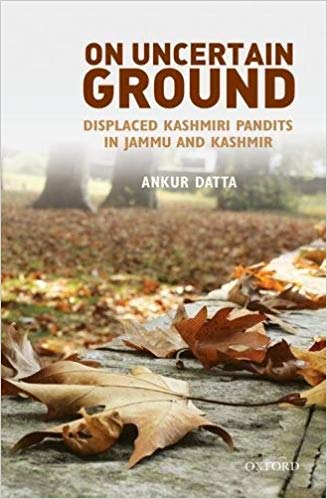Kashmir, an idyllic haven in the foothills of the Himalayas, is a space in which conflicting discourses have been written and read. Cultural notions of Kashmiris in image and word have been reconstructed, I believe, to emphasize the bias that reinforces the propagandist agenda of the hegemonic powers involved in the Kashmir dispute, India and Pakistan. The various factions in the State of Jammu and Kashmir, Kashmiri Muslims, Kashmiri Pandits, Dogras, and Ladakhis, have tried time and again to form a national consciousness in order to name their cultural alterity through the nation as ‘Kashmiriyat’. But due to the regional and ethnic sentiments that are so well-entrenched in the psyche of the people, this attempt is still at a volatile stage. The symbols of nationhood in Jammu and Kashmir—flag, anthem, and Constitution—have thus far been unable to help forge the process of nationalist self-imagining. Although separatist movements have been surfacing and resurfacing in the State since the accession of Kashmir to India in 1947, the attempt to create a unitary cultural identity bolstered by Kashmiri nationalism had been subverted by regional, ethnic, and communal forces. As the decade of the 1990s dawned, as I have said at several forums, the political, cultural and socio-economic fabric of Kashmir was severely impaired by the free rein given to Indian military and paramilitary forces to quell dissidence, and also by Pakistan-trained militants who, in a no holds barred conflict, inflicted atrocities on their co-religionists as well. New Delhi hadn’t succeeded in consolidating democratic institutions in the State, which could have enabled effective participation. India’s political and democratic practices, as Robert A Dahl observes, ‘have displayed some egregious shortcomings from a democratic point of view. It has suffered from recurring violations of basic rights.’ The disillusionment created by New Delhi’s ploys, and the warped motive of the Pakistani military in spurring the growth of a jihadist element in Kashmir and facilitating the infiltration of armed combatants across the Line of Control (border separating India administered Jammu and Kashmir from Pakistan administered ‘Azad’ Kashmir) generated a militant movement in the State. What began as a skirmish over the quashing of democratic institutions in Jammu and Kashmir had erupted into a conflagration that swept the Kashmir Valley and some parts of the Jammu province.
September 2018, volume 42, No 9

